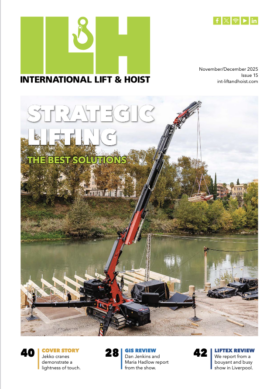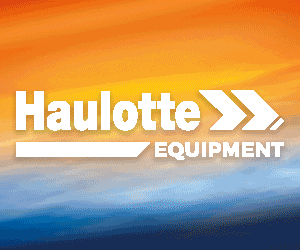Demag Cranes Receives Another Order for Floating Cranes
Gottwald Port Technology GmbH (Gottwald), a subsidiary of Demag Cranes AG, has been awarded a contract to supply two more floating cranes to St. James Stevedoring Partners, Llc, in Louisiana. The cranes will begin service on the Mississippi River this fall. St. James Stevedoring already operates six Gottwald floating cranes. Instead of the conventional rubber-tired chassis that mobile harbor Cranes are usually installed on, the floating cranes are mounted on barges.
“With our two new Gottwald floating cranes, we aim to achieve a flexible increase in our cargo-handling capacities and usefully extend our existing logistics,” said Paul E. Morton, St. James Stevedoring president. “Our customers expect rapid handling of their cargo despite increasing volumes. This goal can only be achieved with high-end cranes, handling rates, and reliability.”
Thomas H. Hagen, member of the management board of Demag Cranes AG and COO, said, “Thanks to their high performance and versatility, our floating cranes are becoming more and more established in the market, as shown again by the follow-up order received from St. James.”
St. James Stevedoring, Convent, La., with six mid-stream buoys served by Gottwald floating cranes ranging from just outside of New Orleans International Airport up to the Lower Mississippi River, aims to extend its handling capacity in its mid-stream operation. The two Model 8 variant G HPK 8400 B floating canes will be added to the existing fleet, and are intended to make the transhipment of bulk goods including ores, coal, cereals and fertilizers from larger vessels, up to Baby-Capesize, to barges, even more efficient.
Demag Cranes Group subsidiary Gottwald Port Technology supplied the customer’s first floating crane, an HPK 330 EG, in 2004, where it has since been in service for more than 42,000 hours of operation. It was the first crane of its kind to be developed in close cooperation with the customer.
The two G HPK 8400 B built for St. James Stevedoring are the first Gottwald floating cranes that can handle heavy loads weighing up to 100 tonnes. For handling bulk goods, they have the highest-performance 63-tonne grab curve that Demag Cranes has installed on a foating Crane until now. In crane classification A8, this enables them to have a radius of up to 37 metres, and even up to 39 metres in A7.
Depending on operating conditions, the G HPK 8400 B cranes can each handle up to 1,850 tonnes of bulk material per hour. This makes them the largest and highest-performing floating cranes of their kind on the lower Mississippi River.
Featuring a new technology, they are also fitted direct with a verifiable weighing system, far more precise than conventional load measuring solutions on cranes. It can be integrated into the handling process more easily than external weighing systems. “Thanks to this innovation, in future we will be able to offer our customers complete transparency with reference to the transhipped goods,” said Morton.
The new system has been approved for use as a verifiable solution in the European Union. Regardless of the immediately useful transparency benefit provided by the system, St. James Stevedoring is also submitting it for corresponding certification with the U.S. testing authority. There are also plans for an officially approved crane weighing system specially designed for cereals to replace today’s weighing solutions with chutes mounted on barges.
Floating cranes such as the Model 8 variant G HPK 8400 B also meet the increasing Green Port efforts being pursued by port and terminal operators. The diesel-electric drive concept typically employed by Gottwald offers good efficiency, which pays off in terms of low fuel consumption and minimized exhaust emissions. New types of dynamic brake resistors also provide for optimized energy management in the cranes, resulting in savings of up to 15.2 percent (achieved under specific deployment conditions and based on experience gained from operating a Gottwald Generation 5 crane over a period of more than one year).











